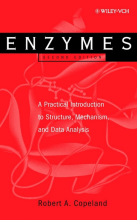Summary: Advanced Biochemical Analysis Of Food
- This + 400k other summaries
- A unique study and practice tool
- Never study anything twice again
- Get the grades you hope for
- 100% sure, 100% understanding
Read the summary and the most important questions on Advanced Biochemical Analysis of Food
-
1 Chromatography
-
1.1 General principles of chromatography
This is a preview. There are 5 more flashcards available for chapter 1.1
Show more cards here -
What is the LOD, LOQ, LOL and dynamic/linear range?
LOD: limit of detection, The minimum amount producing a signal significantly different from the background noise
LOQ: Limit of quantification, The minimum amount from which the area under the eluting peaks can be measured reliably
LOQ is always higher than LOD
LOL: Limit of Linearity, The upper limit for getting a linear response
dynamic /linear range: The range from the amount corresponding to the LOQ and the one corresponding to the LOL -
With what part of the chromatographic system can you do a quantification?
Quantification (with proper calibration) can be properly made only in the dynamic range -
What are the factors contributing to a good resolution?
- Efficiency: number of theoretical plates (number of equilibria between mobile and stationary phase) for unit of space, resulting in narrow peaks
- Retention: the ability of the stationary phase to “retain” an analyte, resulting in higher retention times
- Selectivity: the differential interactions of the different analytes with the stationary phase
-
What is the difference between the peaks shown here?
First 2: Same retention, same selectivity, improved efficiency of first one then you get better resolution
Last 2: Efficiency is increased, but at the same time retention is decreased, while selectivity is mostly unchanged: identical resolution -
What are the requirements for gas chromatography and liquid chromatography?
For gas chromatography: analytes have to be volatiles (at the temperatures used)
For liquid chromatography: analytes have to be soluble (in the solvents used)
The compounds should always go into the mobile phase.
It should also have some affinity both for the stationary and the mobile phase. -
With what are you going to analyse aroma compounds, proteins and insoluble dietary fibers?
Aroma compounds : gas chromatography
Proteins: liquid chromatography
Insoluble dietary fiber (as such) : chromatography not possible if no changes are made on the fiber -
What happens if the compound has no affinity for either the mobile ore the stationary phase?
- If they have no affinity for the stationary phase, they will stay in the mobile phase all the time and they all elute immediately: no separation
- If they have no affinity for the mobile phase, they will be stuck in the column and never seen again: no separation
-
1.3 Gas Chromatography (GC)
This is a preview. There are 6 more flashcards available for chapter 1.3
Show more cards here -
What are the principles of separation in GC?
- High temperatures used (in the range 50C – 350C) to increase volatility of compounds
- The most volatile compounds (lower boiling points) elute first
- For compounds of similar volatility, the ones with polarity most similar to the stationary phase will elute later (more retained)
-
How is the coating of the columns done in GC?
A silica tube with coatings of derivatized polysiloxane. This gives different polarity to the stationary phase.
Most common is 5% phenyl-95% methyl-siloxane -
How do you get the best separation in your gc?
Best separation is achieved by choosing stationary phases with polarity similar to that of the analytes to be separated
- Higher grades + faster learning
- Never study anything twice
- 100% sure, 100% understanding
Topics related to Summary: Advanced Biochemical Analysis Of Food
-
Chromatography - Gas Chromatography (GC)
-
Chromatography - Liquid Chromatography (LC)
-
Mass spectrometry - What is MS
-
Mass spectrometry - Sources ion generation in the gas phase
-
Mass spectrometry - Ion Analyzers
-
Mass spectrometry - Using mass spectrometers as detectors for chromatography: hyphenation
-
Quality assurance/quality control
-
Bioassays - Introduction and general principle - An organism
-
Bioassays - Introduction and general principle - Tissue
-
Bioassays - GMO based bioassays in food safety
-
Bioassays - Bioassays in food safety - Additives
-
Bioassays - Bioassays in food safety - Natural toxins
-
Bioassays - Bioassays in food safety - Environmental contaminants
-
Bioassays - Promises and pitfalls of bioassays in food safety - Promises
-
Bioassays - Promises and pitfalls of bioassays in food safety - Pitfalls
-
Analysis of Carbohydrates - Relevance of carbohydrates - Small sugars
-
Analysis of Carbohydrates - Classical carbohydrate methods
-
Analysis of Carbohydrates - Sample preperation - Derivatisation
-
Analysis of Carbohydrates - Analytic separation techniques for carbohydrates - Chromatography of carbohydrates
-
Analysis of Carbohydrates - Analytic separation techniques for carbohydrates - Capillary electrophoresis of carbohydrates
-
Analysis of Carbohydrates - Detectros
-
Analysis of Carbohydrates - Enzymatic methods for carbohydrate analysis - Starch analysis by enzyme kits
-
Analysis of Carbohydrates - Examples of carbohydrate analysis
-
Proteins - Characterization of hydrolysates
-
Proteins - Complete analysis of peptide compositon
-
Proteins - Determining enzyme selectivity
-
Food traceability and authentication - DNA
-
Food traceability and authentication - Proteins and peptides
-
Food traceability and authentication - ELISA essay on proteins
-
Food Fraud




























